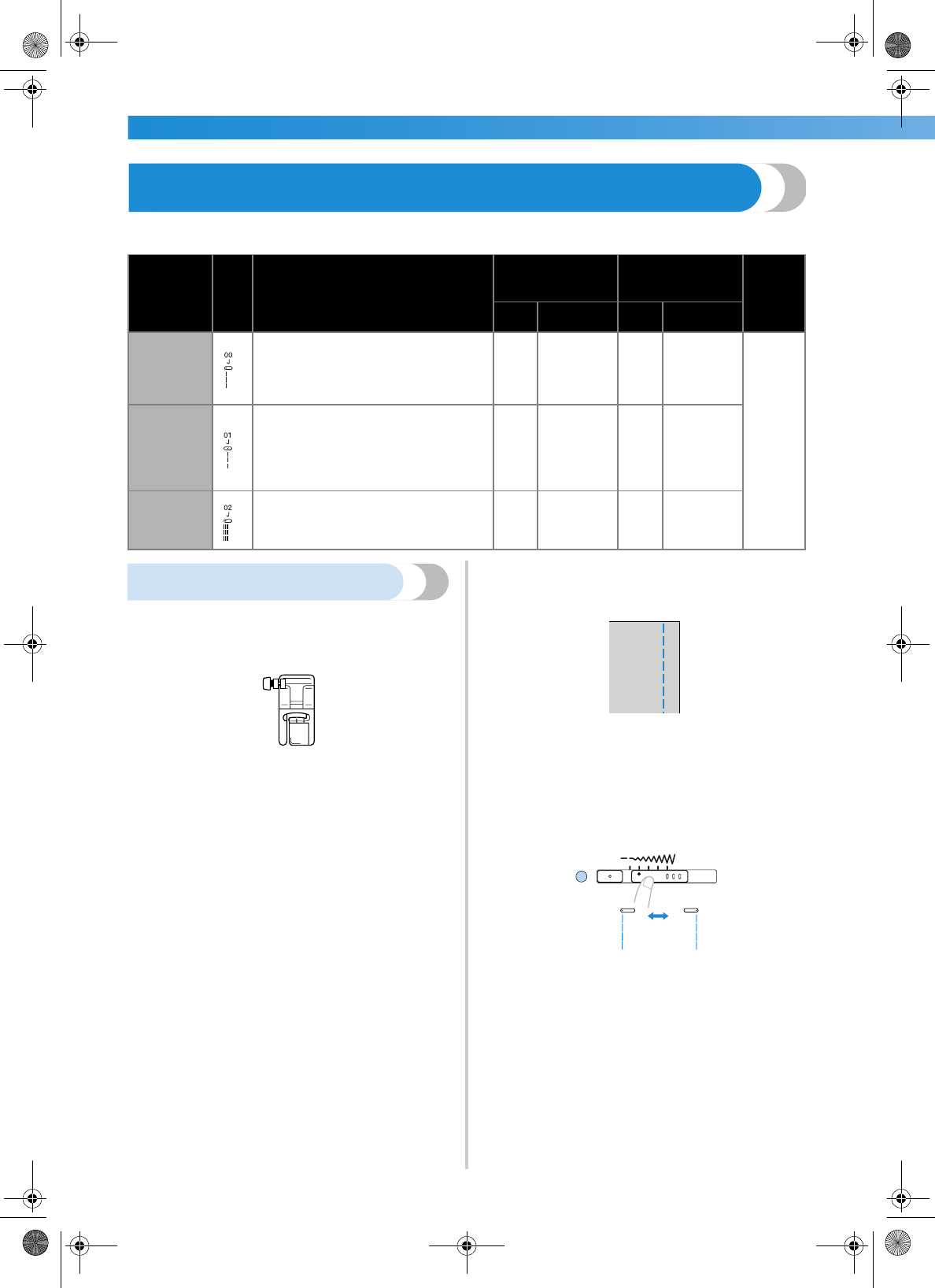
UTILITY STITCHES ——————————————————————————————————————————————————————
—
64
Basic Stitching
Straight stitches are used for sewing plain seams. Three stitches are available for basic stitching.
Basic stitching
1
Baste or pin together the fabric pieces.
2
Attach zigzag foot “J”.
• For details, refer to “ Replacing the presser
foot” (page 35).
3
Select a stitch.
• For details, refer to “ Selecting stitching”
(page 58).
4
Lower the needle into the fabric at the
beginning of the stitching.
5
Start sewing.
• For details, refer to “ Starting to sew”
(page 45).
• For details on sewing reverse/reinforcement
stitches, refer to “Securing the stitching”
(page 47).
6
When sewing is finished, cut the thread.
• For details, refer to “ Cutting the thread”
(page 49).
■ Changing the needle position
With the straight stitch (left needle position) and
the triple stretch stitch, the needle position can be
adjusted. Sliding the stitch width adjustment slider
to the right moves the needle to the right; sliding
the slider to the left moves the needle to the left.
Stitch Name
Pattern
Application
Stitch Width
[mm (inch.)]
Stitch Length
[mm (inch.)]
Presser
Foot
Auto Manual Auto Manual
Straight
stitch (left
needle
position)
Basic stitching and sewing gathers or
pintucks (left baseline/reverse
stitching)
0.0
(0)
0.0– 7.0
(0– 1/4)
2.5
(3/32)
0.2– 5.0
(1/64– 3/16)
J
Straight
stitch
(center
needle
position)
Basic stitching and sewing gathers or
pintucks (center baseline/reverse
stitching)
––
2.5
(3/32)
0.2– 5.0
(1/64– 3/16)
Triple
stretch
stitch
Reinforcing seams and sewing stretch
fabrics
0.0
(0)
0.0– 7.0
(0– 1/4)
2.5
(3/32)
1.5– 4.0
(1/16– 3/16)
J
S2_brotherE.book Page 64 Thursday, February 13, 2003 11:03 AM


















